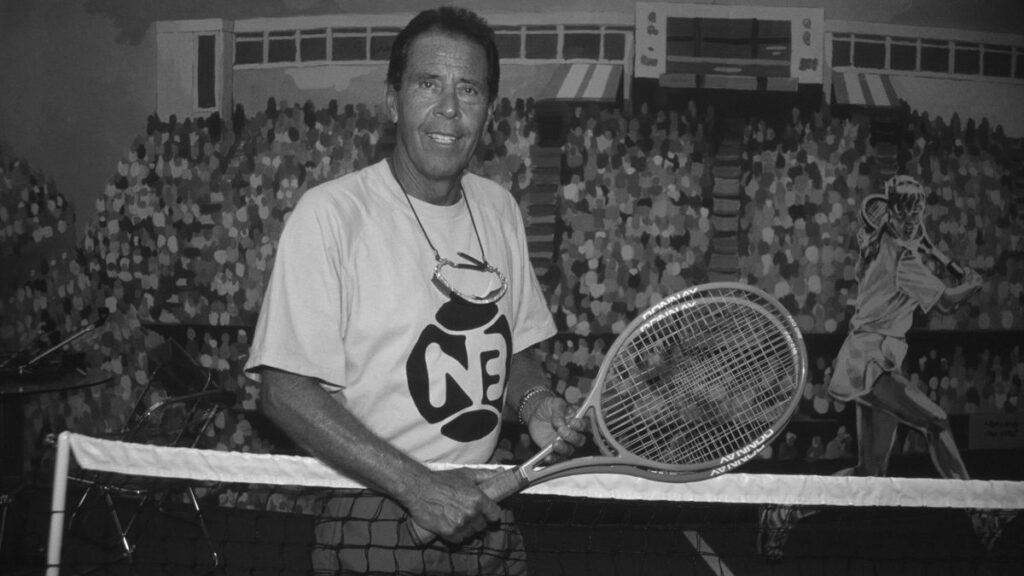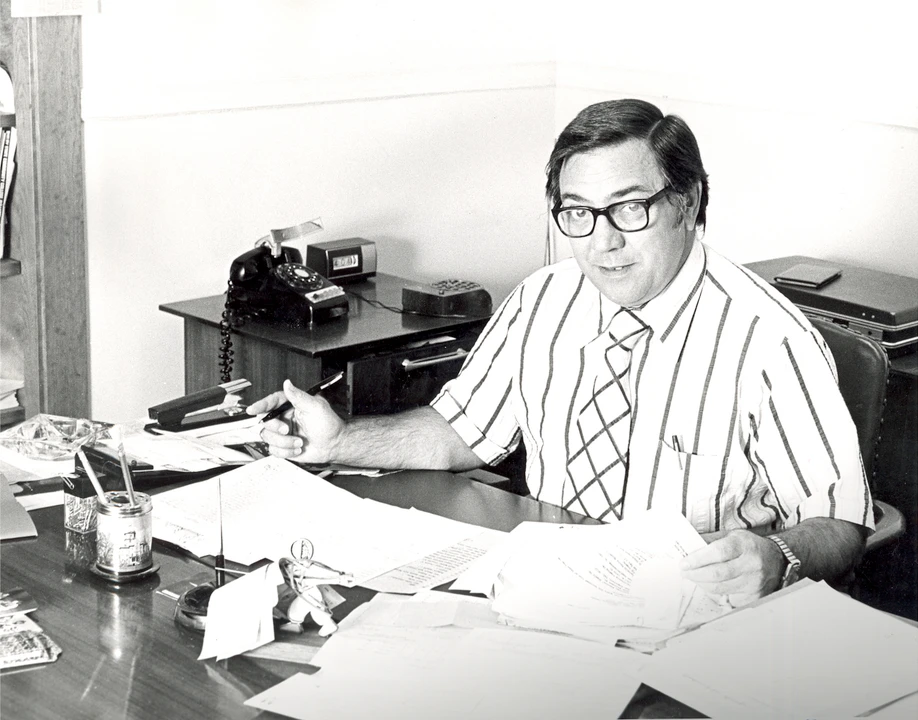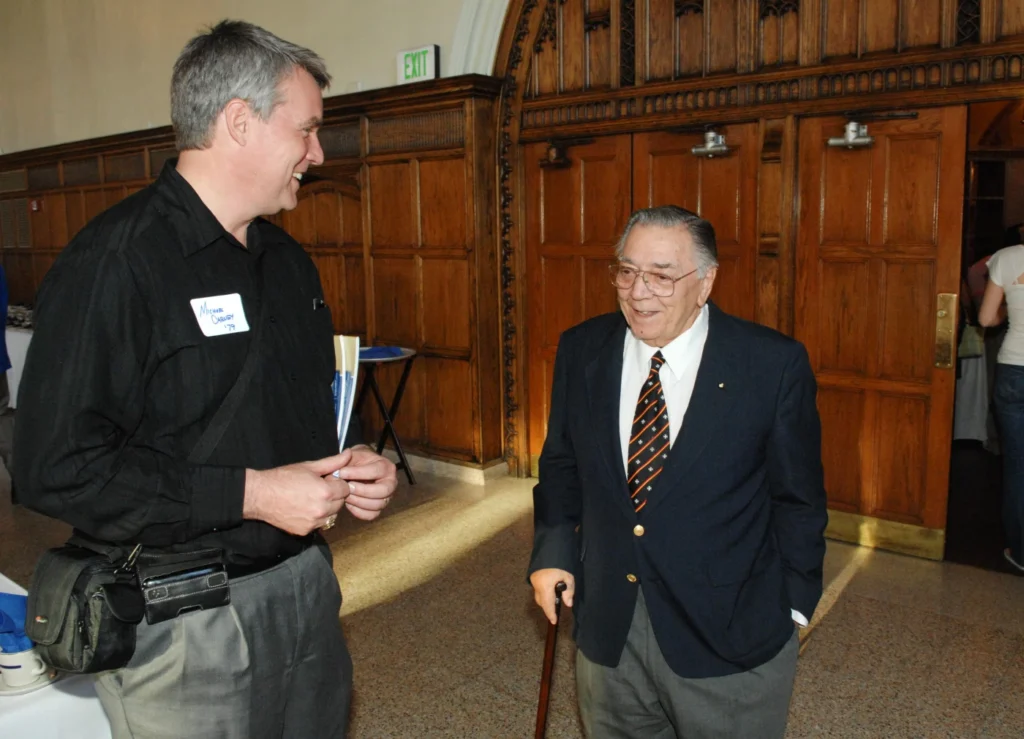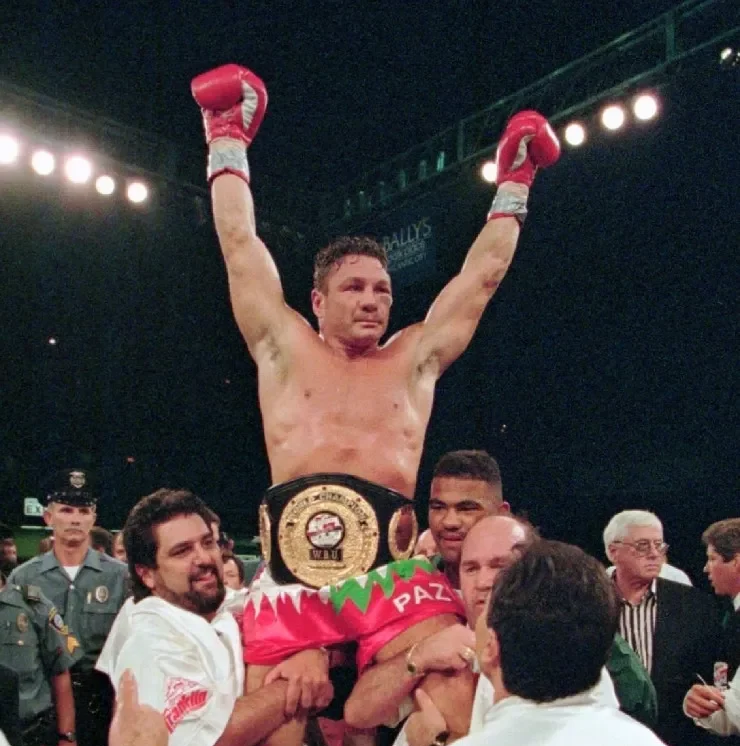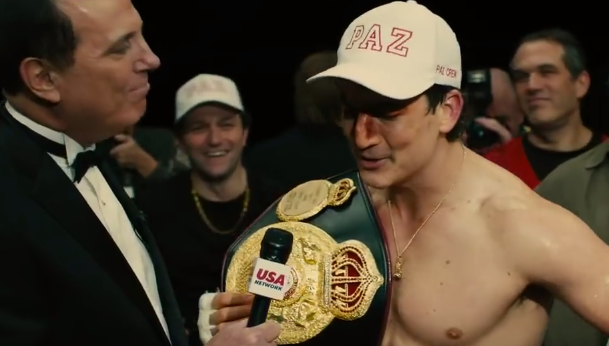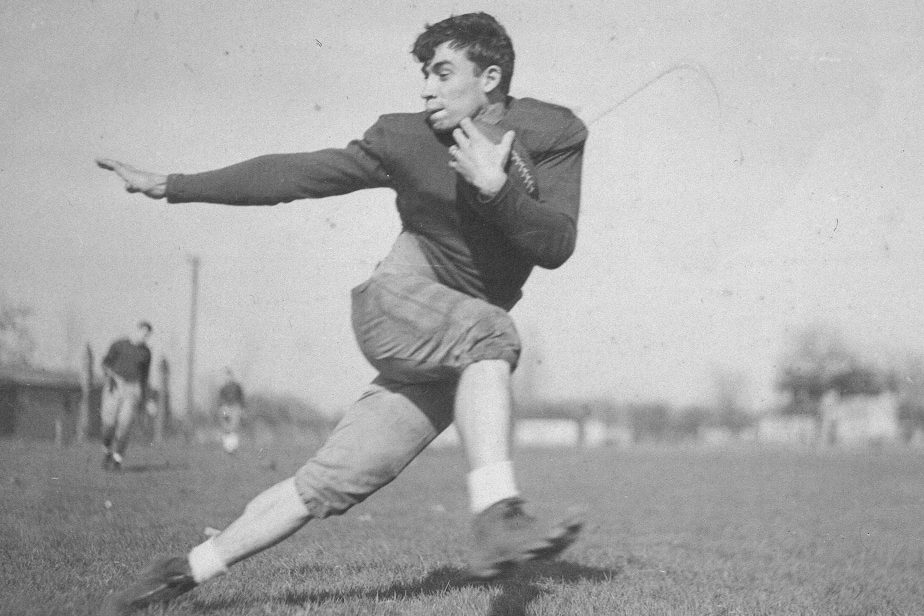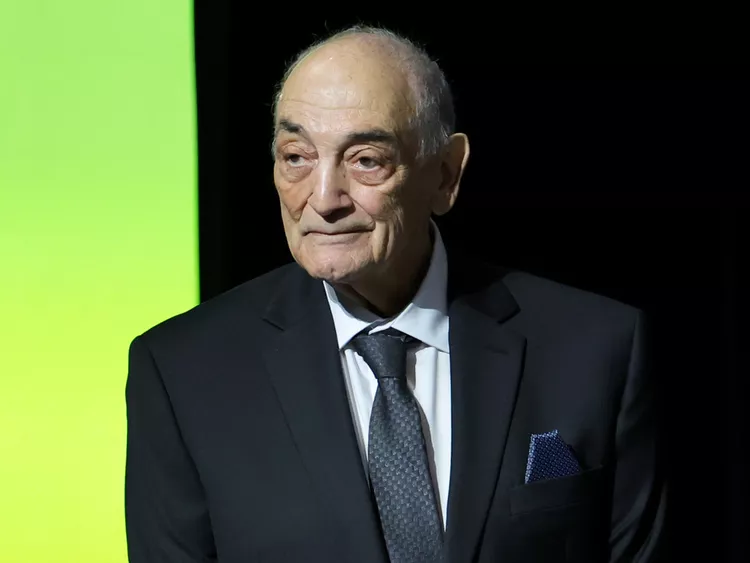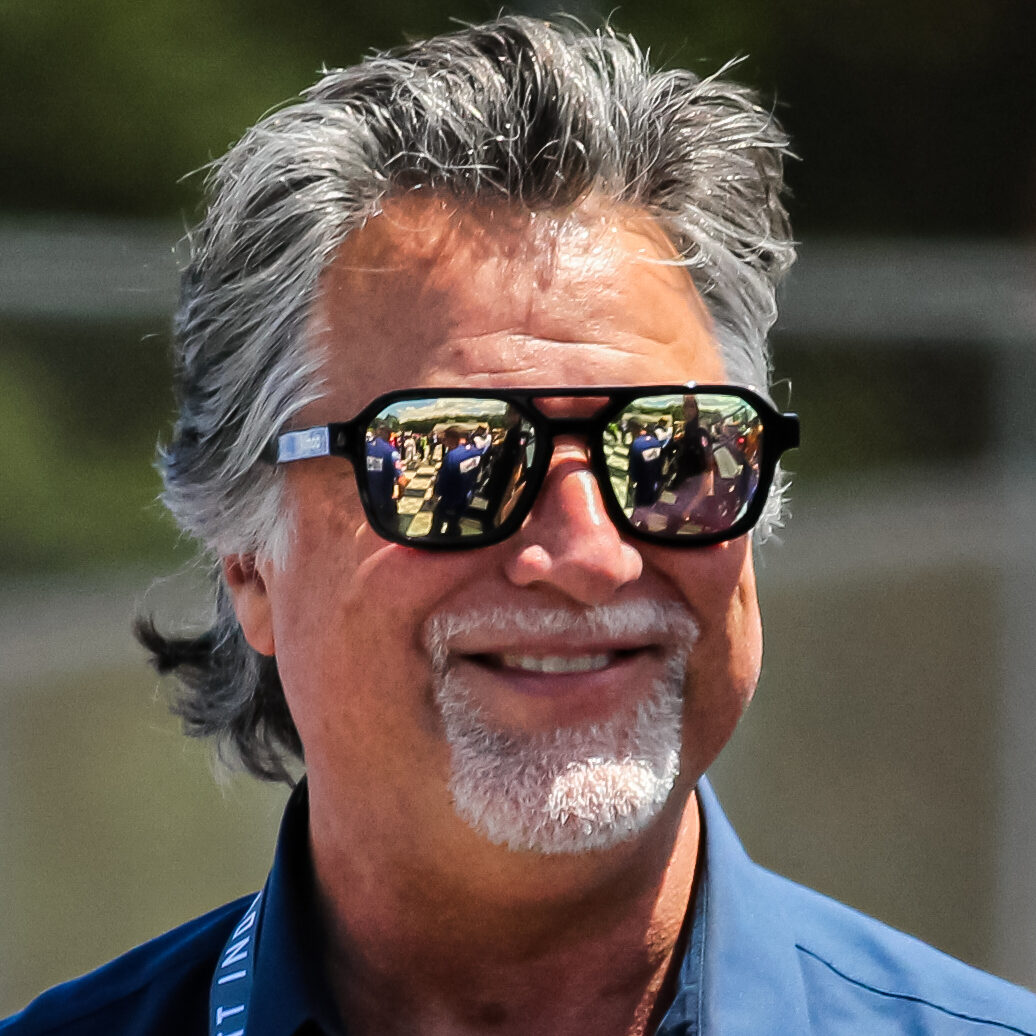
Michael Andretti
Go-Kart and Car Racing, CART, Formula One
A second-generation champion and one of the great drivers in history, taking wins in a variety of different cars, from go-karts to CART.
Michael Andretti was introduced to racing upon his birth in 1962, as the son of legendary racer Mario Andretti. It didn’t take long for the second generation to begin applying himself on the racetrack as well, with the youngster winning 50 go-kart races between 1972-79.
Turning his career into a more mature form, Andretti turned pro in 1980, running in the Formula Ford Series. By 1981, Andretti captured his first of many wins and snared top honors in the Northeast division of the Formula Ford series with six victories. By 1983, Andretti graduated to Champ Cars, racing for Kraco. His conversion was quick, finishing seventh overall in his full rookie campaign, 1984.
Andretti then went on to a highly successful run in CART racing. After several years of dominance in CART, Andretti switched over to European Formula One racing in 1993, scoring several impressive finishes during the season. He returned to American Champ racing in 1994, and has been a fixture in the top 10 virtually every year since. In all, his 40 overall wins trail only his father, Mario, and the legendary A.J. Foyt.
Michael Andretti and his wife, Leslie, reside in Nazareth, Pennsylvania, with their children Marco, Marissa and Lucca. He was elected to the National Italian American Sports Hall of Fame in 2002

Nick Bollettieri
Tennis
Nick Bollettieri, the legendary tennis coach and founder of the Nick Bollettieri Tennis Academy, which eventually evolved into the renowned IMG Academy, has passed away at the age of 91. Known for his unwavering passion for developing young talent, Bollettieri was dedicated to coaching and mentoring athletes throughout his life. Even in his final days, he continued to actively engage with students and staff, leaving a lasting impact on those around him. “He made a permanent and lasting impact on all of us,” said Tim Pernetti, President of IMG Academy Bradenton, in tribute to Bollettieri’s tireless dedication to the Academy and its athletes.
Bollettieri’s legacy is deeply intertwined with the success of many of tennis’s greatest players. He founded the Nick Bollettieri Tennis Academy in 1978, focusing on intense training, total immersion, and fostering competition among the world’s top talents. His coaching helped develop 10 players who reached world No. 1 rankings, including tennis icons Andre Agassi, Boris Becker, Jim Courier, Maria Sharapova, and Venus and Serena Williams. These athletes’ achievements, fueled by Bollettieri’s guidance, helped shape the modern era of tennis.
Bollettieri’s influence extended beyond tennis. His academy, which later became IMG Academy, grew into a major institution not only for tennis but also for athletes across multiple sports. Jimmy Arias, one of Bollettieri’s original students and the current IMG Academy director of tennis, emphasized how Bollettieri’s vision had a profound impact on athlete development at all levels. Bollettieri’s methods and passion transformed the training landscape for aspiring athletes worldwide.
Bollettieri’s contributions to the sport were officially recognized in 2014 when he was inducted into the International Tennis Hall of Fame. In 2022, he received another honor as the first inductee into the IMG Academy Hall of Fame, a fitting recognition for a man whose impact on tennis and athletic development continues to be felt today. His legacy lives on through the countless athletes he mentored and the institution he founded.

Michael DeCicco
Fencing, Coach
Mike DeCicco, a legendary figure in Notre Dame’s history, left a profound impact as both a fencer and a coach. As an undergraduate from 1947 to 1949, he compiled an impressive 63-20 record, excelling in all three fencing disciplines—foil, epee, and sabre. His 29-1 foil record in his junior year stood as a school benchmark for nearly 30 years. His prowess as a fencer laid the foundation for a remarkable coaching career, which saw him become the most successful coach in Notre Dame’s history. Over 34 seasons, DeCicco led the Irish fencing team to five national championships and amassed an incredible 680-45 record, with a .938 win percentage. His coaching legacy is further highlighted by a 122-match win streak spanning four years.
DeCicco’s coaching philosophy was built on inclusivity and mentorship, guiding many novices to success. Notably, 90% of his athletes arrived at Notre Dame with no prior fencing experience, and DeCicco never cut a single player. His teams thrived despite minimal resources, often practicing in cramped spaces under the bleachers. Under his leadership, the fencing program became a dominant force in college athletics, producing numerous NCAA individual champions. His legacy is also marked by his initiative to create the women’s fencing team in 1977 and his role in mentoring hundreds of athletes, who fondly referred to him as a father figure.
Beyond his fencing achievements, DeCicco was a distinguished professor of mechanical engineering at Notre Dame, teaching from 1954 to 1983. He was also the university’s first academic advisor for student-athletes, a position he pioneered in 1964. DeCicco’s commitment to academics was instrumental in Notre Dame’s success both on and off the field. He helped guide athletes to graduation, contributing to the university’s recognition for academic achievement, including a 100% graduation rate for football players in 1988. His efforts helped bridge the gap between athletics and academics, earning him the respect of both faculty and athletes.
DeCicco’s legacy extends far beyond his fencing accomplishments. His impact on student-athletes was profound, providing guidance and support through personal and academic challenges. His mentorship transformed the lives of countless individuals, including Olympians, national champions, and future leaders. DeCicco’s embrace, both literal and metaphorical, was a symbol of his deep affection for Notre Dame and its athletes. His contributions to the university over 41 years are immeasurable, shaping the institution into the academic and athletic powerhouse it is today.

Vinny Pazienza
5x World Boxing Champion
Vinny Paz, later known as Vinny Pazienza, made his mark in the boxing world during the 1980s with a series of impressive victories over notable opponents, including Melvin Paul, Joe Frazier Jr., Harry Arroyo, and Roberto Elizondo. His breakthrough came on June 7, 1987, when he defeated Greg Haugen by decision over 15 rounds to claim the IBF World Lightweight Championship. The two would meet twice more, with Haugen winning the title back in an immediate rematch, and Pazienza securing the rubber match with a 10-round decision in 1990.
In 1991, Pazienza, under the guidance of trainer Kevin Rooney, moved up to the junior middleweight division. He quickly made an impact, winning the USBA Jr. Middleweight Championship in his debut fight in the new weight class. Pazienza went on to defeat Gilbert Delé by 12th-round TKO to capture the WBA World Jr. Middleweight Championship, becoming only the second fighter in history to hold world titles in both the lightweight and junior middleweight divisions.
Tragedy struck in 1991 when Pazienza was involved in a severe car accident that left him with a broken neck. Doctors told him he might never walk again, let alone fight. Despite the grim prognosis, Pazienza wore a medical device called a Halo for three months and defied doctors’ orders by maintaining a rigorous workout routine. Remarkably, 13 months later, he returned to the ring and defeated Luis Santana by a 10-round decision. Pazienza went on to secure several more notable victories, including a TKO win over former World Champion Lloyd Honeyghan and an 11th-round KO against Dan Sherry to capture the vacant IBO Middleweight World title.
Pazienza continued to dominate, winning the IBC Super Middleweight title with two victories over Roberto Durán and capturing the WBU Super Middleweight title in 1996 by knocking out Dana Rosenblatt. In 2001, he legally changed his last name to Paz. His career culminated in 2004 with a final victory over Tocker Pudwill. Paz’s impressive record stands at 50–10, with 30 knockouts, five world titles, and a legacy as one of boxing’s most resilient champions.
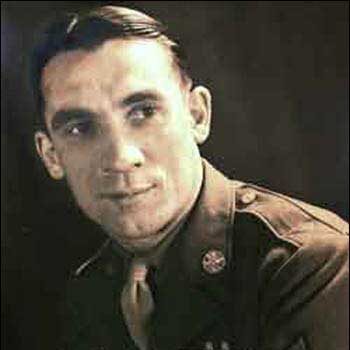
Mario Tonelli
Football
Mario “Motts” Tonelli, a standout football player at Notre Dame, is best remembered for his heroic performance in the 1937 season finale against USC. With the score tied and just minutes remaining, Tonelli broke a 68-yard run and scored the game-winning touchdown, clinching a 13-7 victory for the Fighting Irish. This moment, witnessed by 40,000 fans in Notre Dame Stadium, was not only a defining achievement in his football career but, unbeknownst to him at the time, would also play a role in saving his life during the brutal years that followed.
Born the son of Italian immigrants in the Chicago suburbs, Tonelli overcame a childhood tragedy when he suffered severe burns over much of his body at age six. Despite doctors’ grim prognosis that he might never walk again, his father’s dedication helped him recover. As an athlete at DePaul Academy, Tonelli excelled in football, basketball, and track, earning attention from top college programs. Ultimately, he chose to play football for Notre Dame under Coach Elmer Layden, where he starred for three seasons. After the College All-Star Game in 1939, Tonelli received his gold class ring, a symbol of his successful college career.
In 1940, Tonelli joined the Chicago Cardinals but soon enlisted in the Army, feeling a strong sense of duty. By December 1941, he was stationed at Clark Field in the Philippines, where he witnessed the infamous attack on Pearl Harbor. Tonelli fought valiantly during the subsequent Bataan Defense and endured the horrors of the Bataan Death March, a grueling 60-mile trek to a prison camp. Despite being stripped of his belongings, including his Notre Dame ring, a compassionate Japanese officer returned it to him after recognizing Tonelli’s heroics in the 1937 USC game, an act that deeply impacted the young soldier.
Tonelli’s 1,236 days as a prisoner of war were filled with suffering, including forced labor, malnutrition, and diseases like malaria and scurvy. Yet, throughout his ordeal, he found solace in the small comfort of his Notre Dame ring, which symbolized hope and survival. After his release in 1945, Tonelli returned home severely weakened but went on to play briefly with the Chicago Cardinals. In 1946, he transitioned to a career in public service, working for Cook County, Illinois, for over 40 years. Mario Tonelli passed away in 2003, remembered as a hero not only for his athletic achievements but for his resilience, bravery, and lifetime of service to his community and country.

Sonny Vaccaro
Basketball
Sonny Vaccaro, a pivotal figure in the sports marketing world, is best known for his role in transforming Nike into a powerhouse in basketball through groundbreaking endorsements with athletes like Michael Jordan and Kobe Bryant. Vaccaro’s early career began with his passion for high school basketball, where he founded the Dapper Dan Roundball Classic in 1965. This national high school all-star game became a massive success, attracting future NBA legends such as Shaquille O’Neal, Patrick Ewing, and Dominique Wilkins, and played a crucial role in shaping Vaccaro’s career. By the time he ended his involvement in 2007, the Roundball Classic had solidified its place in Pittsburgh sports history.
In 1977, Vaccaro took his talents to Nike, where he was instrumental in the company’s early basketball ventures. Initially hired to sign college teams to Nike, he quickly revolutionized the brand’s presence in basketball. By 1979, Vaccaro had signed ten top college teams to Nike, and within two years, this number grew to fifty. His most significant achievement came in 1984, when he convinced Nike to offer Michael Jordan a lucrative endorsement deal before Jordan had even played for the Chicago Bulls. Vaccaro’s foresight and ability to sell the idea of a signature sneaker for Jordan led to the creation of the iconic Air Jordan brand, a deal that exceeded Nike’s projections and is now considered one of the most successful marketing partnerships in history.
In addition to his work with Nike, Vaccaro’s career included significant stints at Adidas, where in 1996, he signed a high school senior named Kobe Bryant to an endorsement deal. At the time, few brands were willing to take a chance on a high school player, but Vaccaro’s belief in Bryant’s potential helped Adidas become a serious competitor in the basketball shoe market. He also created the ABCD (Academic Betterment and Career Development) Camp, a summer basketball program that became a key development stage for young talent like LeBron James, Tracy McGrady, and Bryant. The camp cemented Vaccaro’s status as one of basketball’s most influential figures, known for his ability to spot and cultivate future NBA stars.
Beyond his success with athletes, Vaccaro became a strong advocate for college athletes’ rights. In the mid-2000s, he took on the NCAA, criticizing the organization for profiting off college athletes without compensating them. His advocacy led to his involvement in the landmark O’Bannon v. NCAA lawsuit, which ultimately resulted in a ruling that allowed college athletes to receive compensation for the use of their names, images, and likenesses. This was a transformative moment in college sports, and Vaccaro considered it the proudest achievement of his career. His work in this area has had a lasting impact on the landscape of collegiate athletics, making Vaccaro not only a key figure in sports marketing but also a champion for athletes’ rights.



